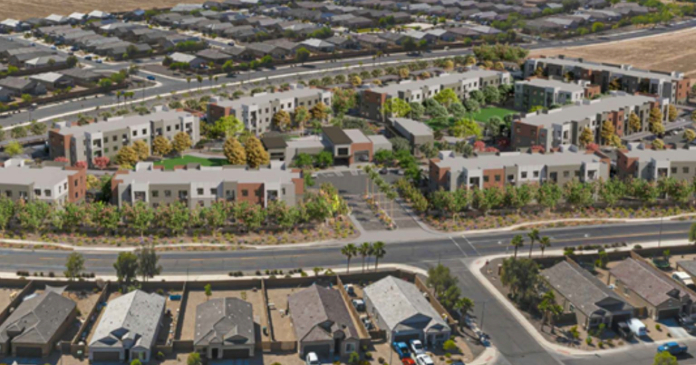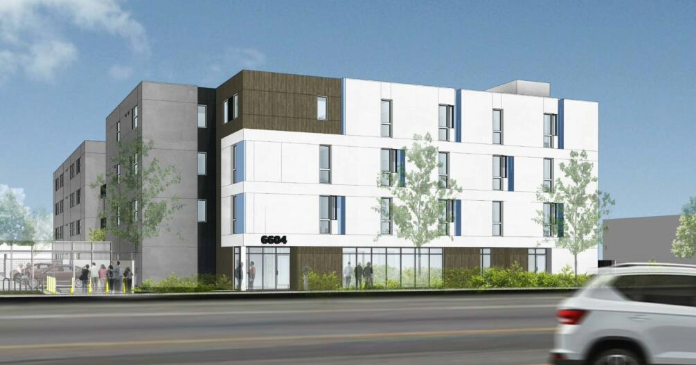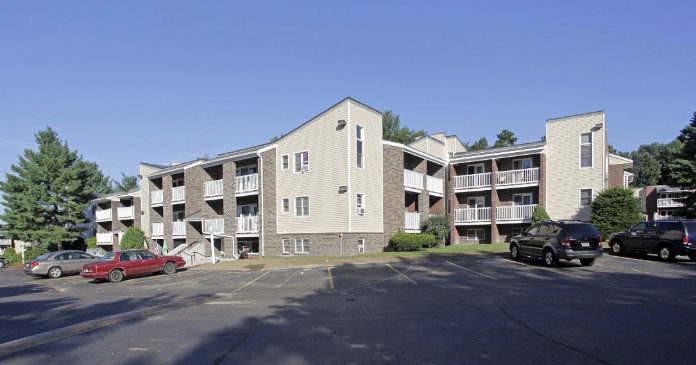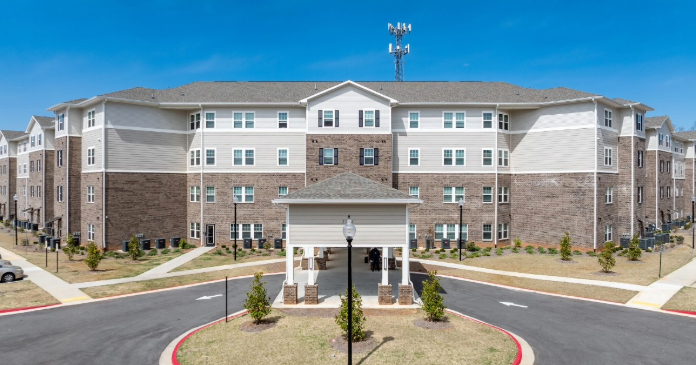The “Week 60” edition of the Census Bureau’s Pulse Survey shows that the portion of renters who are reporting that their rent increased in the last 12 months has been rising. The most common rent increase reported is one between $100 and $249 per month.
The Week 60 survey collected data from July 26 to August 7, 2023.
Rent delinquencies in line with past reports
Renters in all phases of the Pulse survey have been asked whether they are behind on their rent. The first chart, below, shows the portion of respondents who said that they were behind at the time they were surveyed. The midpoint of the “Week 60” survey period was August 1, 170 weeks after the initial Pulse Survey. This survey period spanned the end of one month and the start of the next.
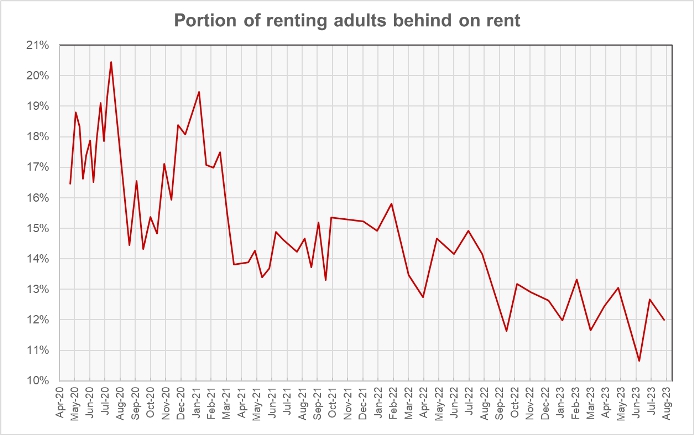
The portion of renters who pay rent (about 5 percent do not) reporting that they were behind on their rent has varied between 10.7 percent and 13.3 percent since the Week 50 survey in late September 2022. This month’s reported delinquency rate again fell into this range, although on its higher end.
Note that the Week 58 survey set a new low for the portion of renters who reported being behind on their rent. That survey’s data collection period did not span the end of one month and the start of the next, as most do. Since it collected data starting June 7, it would not have caught renters during the first days of the month where they just had not gotten their rent check in, although they were willing and able to do so. This may explain the relatively good results.
Assessing rent growth
The survey asked participants whether they had experienced rent increases over the past 12 months. In the Week 60 survey, 35.8 percent of respondents who pay rent said that they either had not experienced a rent increase in the past 12 months or that their rent had gone down. This is a decrease of 6.2 percentage points since we last reported on the Week 57 survey. An additional 20.3 percent had experienced a rent increase of less than $100. These results are shown in the next chart, below.

The question about the size of rent increases over the past 12 months has been asked since the Week 46 survey. The next chart gathers all of the answers to this question together to look for trends. Despite survey-to-survey variability in the data, one trend visible in the chart is a declining portion of renters who have had no change in their rent. The Week 60 result is 10.2 percentage points lower than what was seen when this question was first asked in June 2022. Another trend is that the portion of renters experiencing rent increases of $100 to $249 has been rising. It is up 7.0 percentage points since this question was first asked.
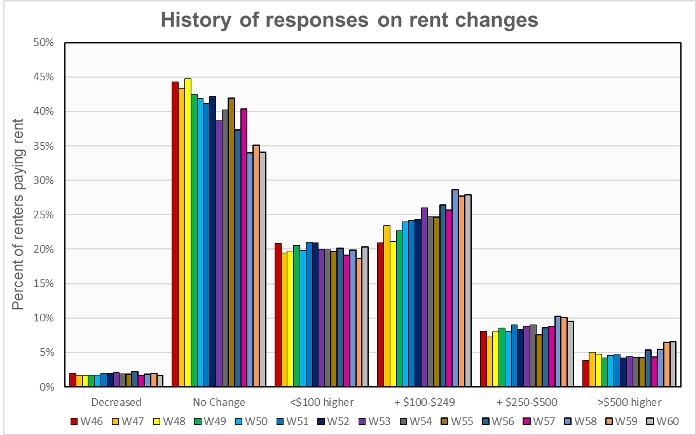
Profiling the participants
Of the respondents who reported being current on their rent, 34.3 percent said that they had children in the household. Of those reporting being behind on their rent, 50.3 percent reported having children in the household.
Of the respondents who reported being current on their rent, 14.4 percent said that they or a household member had experienced a loss of employment income over the prior 4 weeks. Of those reporting being behind on their rent, 34.6 percent reported that they or a household member had experienced a loss of employment income.
The next chart shows the portion of respondents who are behind on their rent by education level. It shows that being current on their rent is correlated to the education level of the respondent.
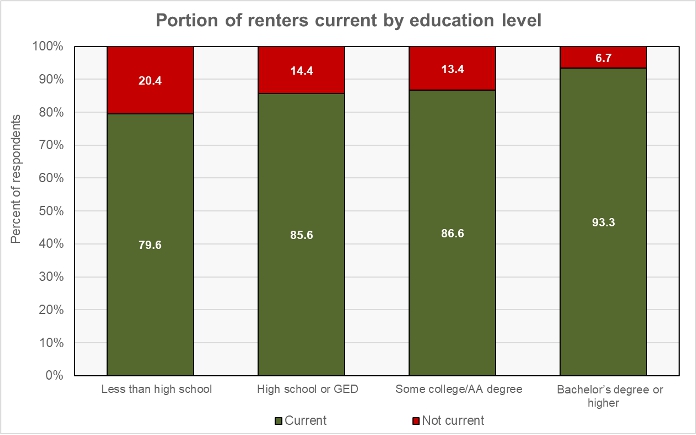
The final chart shows the sources of the funds survey respondents used to meet spending needs. Compared to the Week 48 survey taken one year earlier, the portion of respondents who are current on their rent saying they rely on regular income sources for their support in the Week 60 survey is about 10 percentage points higher. In Week 60, 82 percent of respondents agreed. For respondents who are behind on their rent, 62.9 percent said that they relied on regular sources of income in the Week 60 survey compared to only 42.7 percent in the Week 48 survey.

What is the Pulse Survey?
The Pulse Survey is an experimental program that the Census Bureau started shortly after economic shutdowns were imposed in response to COVID-19. It was designed to assess how the population of the country was faring under the economic stress caused by the reaction to the pandemic. The current survey, designated Week 60 despite being conducted 4 weeks after the previous survey, was collected under what Census calls Phase 3.9 of the survey. With each new phase of the survey, Census modifies the set of questions being asked. The renter portion of the survey covers renters of both multifamily and of single-family properties.




